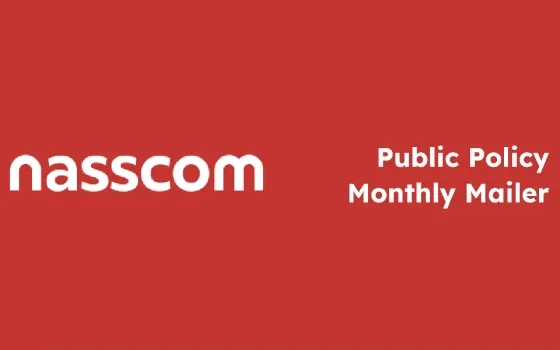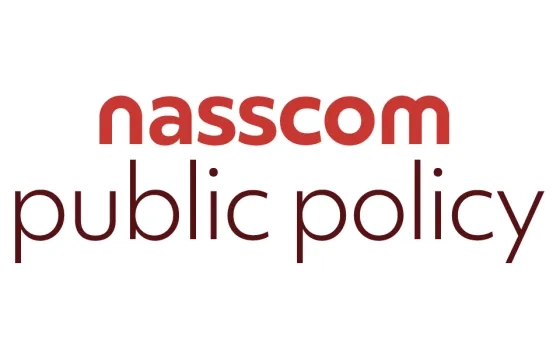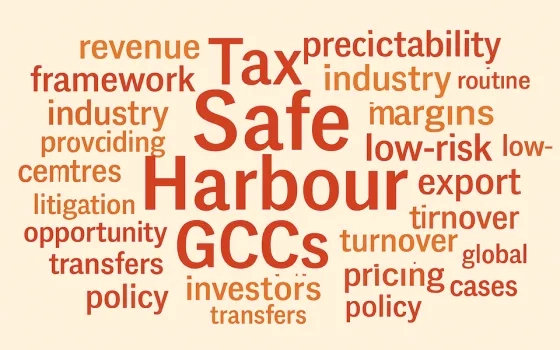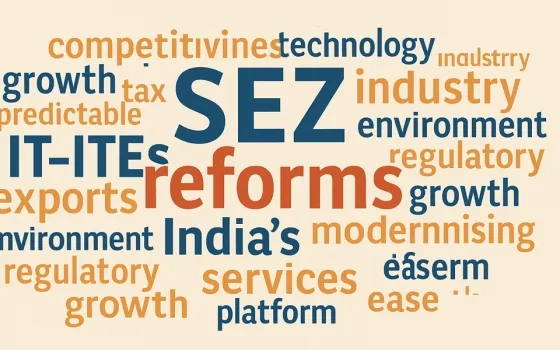Nasscom recently submitted its recommendations to the Office of the Principal Scientific Adviser (PSA) on promoting R&D ecosystem for IT & BPM industry in India. Please find below the key highlights from our recommendations:
India’s Research and Development (R&D) should focus on the following technologies over the next five to 10 years.
- Internet of Things (IoT),
- Cloud computing,
- Artificial Intelligence (AI),
- Fifth Generation wireless (5G)
- Distributed Ledger Technology (DLT),
- Renewal energy,
- Rechargeable batteries
The R&D efforts in the above should broadly prioritise solutions in:
- Agriculture
- Health
- Mobility
The R&D benefits/concessions given by the Indian government to the industry should benchmark with incentives available to the industry in other countries like the US, Canada, Israel, Ireland/Northern Ireland and Singapore. This will make India truly competitive as an R&D destination. We propose recommendations under the following categories, namely:
- Tax Model
- Income Model
- Ease of Doing Business
- Awareness and Talent Development
- Tax Model
For R&D to grow and sustain, many countries offer generous tax breaks aimed at developing synergies at the level of government-industry-academia and harnessing the capabilities to the full potential.
Tax breaks for R&D companies can take many forms:
- Capital expenditure (capex) subsidy based on a fixed amount per person employed or seat deployed
- Training subsidy for funding the recruitment/training cost for new recruits
- Lower income tax rate for companies doing R&D
- R&D tax credit to reimburse companies partially (and in certain cases wholly) for R&D related expenditure
Indirect monetary benefits under this model include:
2018 has been a significant year when countries have introduced significant tax changes to incentivise R&D. Singapore, for example, increased its tax deduction for labour costs and consumables incurred on qualifying R&D projects performed in Singapore from 150% to 250%; likewise, Poland has increased its similar deduction, from 100% to 200%, effective 1 January 2018. Austria, Denmark, Hong Kong and New Zealand have or are considering introducing completely new R&D incentives. According to Ernst & Young’s ‘Worldwide R&D Incentives Reference Guide 2018’[1], tax competition-driven by governments wanting to attract economic activity to their jurisdiction-sits at the heart of much of the global tax change occurring today.
This desire for tax competitiveness is perhaps more apparent within the R&D incentives category than in any of the other business tax categories tracked in E&Y’s global outlook for tax policy. According to that annual publication, 14 of 41 jurisdictions (34%) surveyed are forecasting new or more generous R&D incentives in 2018 (compared with 22% in 2017), with 9 of the 14 enhancing their R&D incentives for the second year in a row.
In the BRICS group:
- Brazil offers super deductions of 160% to 200% to taxpayers with eligible R&D expenses, financial support to new R&D investments and accelerated depreciation on qualifying R&D assets. The Brazilian government aims to achieve technological innovation, product innovation and enhanced R&D activities through its R&D incentives.
- Russia offers 150% super deduction of eligible R&D expenses incurred for activities in accordance with the Government-approved list. Regional governments may provide a reduced profits tax rate (from 20% to 15.5%) for taxpayers engaged in certain types of R&D activities. Reduced rates of social security contributions are available to information technology (IT) companies at the following rates: 14% on annual compensation up to RUB 815,000; 12% on annual compensation up to RUB1.021 million; and 4% on annual compensation exceeding RUB1.021 million.
- China offers 150% super deduction of qualified R&D expenses for corporate tax purposes. Further, incentives are provided to taxpayers eligible for the Technologically Advanced Service Company (TASC) and the High and New Technology Enterprise (HNTE) status. These benefits, from 2017 include:
- A reduced corporate tax rate of 15%.
- Increased deduction limit of employee education expenses increases ay 8% of total salaries and wages (compared with the normal rate of 2.5%) for corporate tax purposes.
- A zero value-added tax (VAT) rate treatment on qualified offshore outsourcing service income.
The R&D related policies in India need to be reviewed in the context of global push for R&D through incentives.
The Indian government provides preferential tax treatment for promotion of in-house R&D. India follows a deduction mechanism as an incentive for encouraging the R&D spends and the current weighted deductions available on various spends is restricted to 150% (which earlier was 200%) of the spend.
The Finance Act, 2017 has introduced a sunset clause for the above-mentioned deductions available. As per the said provisions, the deduction shall be limited to 100% of the actual expenditure from the AY 2021-22 (i.e., FY 2020-21).
The current R&D incentives result in 17.47% of the R&D spend as an additional amount being available to the companies for reinvestment in R&D efforts, which from FY 2020-21 will not be available thereby resulting in lower available amounts for R&D efforts.
We make the following suggestions with regard to the incentives on R&D activities in India:
a. Suggestions on R&D incentives:
- Weighted deduction of 150% / 200% to be continued beyond FY 2020-21.
- Tax Credit, Additional Tax Credit, Cash grants and reduced Income Tax Rates for entities undertaking R&D activities.
- The unabsorbed weighted R&D benefit to be allowed to be carried forward indefinitely.
b) Suggestions on process of getting the R&D recognition:
- Separate Guidelines on how R&D benefits are available to services industry to be issued, as the guidelines for manufacturing industry might not be relevant for the services industry. E.g. basis of demonstrating completion of R&D and commencement of manufacturing needs to have resource identified to a specific location etc.
- The process of getting DSIR recognition takes 6 to 9 months approximately and at times might require lot of follow-ups. This needs to be shortened with online/digital filing facilities.
- Automated/online exchange of information or details between DSIR and Income Tax department to facilitate hassle free and speedy processing of the deduction claimed under Income Tax Act, 1961 for R&D expenses.
2. Income Model
In addition to the tax incentives outlined above, the government should also consider an ‘income model’ to promote R&D by the industry. An example of such a model is the funding which Defense Advanced Research Projects Agency (DARPA) provides to the industry to carry out R&D to develop revolutionary technology using federal grants, and to increase private sector commercialisation of innovations derived from such grants.[2] DARPA funding includes opportunities for small businesses such as Small Business Innovation Research (SBIR) and Small Business Technology Transfer (SBTT).[3] Similarly, the National Science Foundation (NSF) in the US funds research in various fields of science and engineering; the funding is awarded to colleges, K-12 schools, universities, informal science organisations, businesses and other research organisations in the US.[4]
The ‘income model’ drives the culture of ‘risk-taking’ among researchers, as the industry will be more ambitious in undertaking R&D efforts when it can rely on external sources of funding. Further, the prospect of commercialising the invention (if successful) and generating income for the industry (which may be limited to cost plus for government-funded inventions in certain cases), is also a reward for the industry to carry out R&D.
One has to only look at innovations such as the internet, global positioning satellites and unmanned aerial vehicles to understand how successful the DARPA model of funding has been in creating breakthrough technologies.[5]
3. Ease of Doing Business
Under ease of doing business (EODB) measures to promote R&D, the government should simplify processes for the industry to claim R&D benefits under existing schemes, including any other process for furthering EODB. In particular, we recommend the following:
- Simplify the conditions for availing tax benefits including approval process by Department of Scientific and Industrial Research (DSIR) prescribed under section 35 of the Income Tax Act, 1961.
- Reduce DoT approval cycle time for importing radio frequency (RF) devices under licensed band which currently runs into 3-4 months. RF devices are needed in labs and testing being in smart metering/AMI space.
- Waive the requirement to provide special valuation branch (SVB) bond order copy to Indian customs authorities. This waiver may be provided to R&D centres on the grounds that they import samples for testing purposes and not for commercial transactions.
- Rethink classification and incentivisation of R&D in services. There is also a case for classifying new products, new services and the effort invested in creating innovative product/services as R&D. Unlike products which take the form of new material or formula or method/process, R&D in services is of a different nature (like blockchain service, competencies in enterprise architecture or a specific technology noun). The classical definition of R&D (measured in terms of publications and patents) is restrictive and makes it hard for R&D related to services to qualify as R&D.
- Recognise and encourage R&D outsourced to India.. Major IT services providers in India have a product engineering/product life cycle management practice to carry out R&D work for foreign clients. Such service providers should also be allowed to avail of R&D related tax incentives, to make India globally competitive in R&D. A related benefit is that by creating R&D opportunities within India, more Indian students will see the career benefits of earning a PhD. The culture of doing PhD in India is missing currently because of the perception that research opportunities are lacking in India.
4. Awareness & Talent Development
The government should invest in facilitating specific skill training at nearby colleges to make candidates eligible for being hired for by companies doing R&D.
[1] National Science Foundation, ‘About Funding’; available at: https://www.nsf.gov/funding/aboutfunding.jsp
[2] Regina E. Dugan and Kaigham J. Gabriel, ‘”Special Forces” Innovation: How DARPA Attacks Problems’, Harvard Business Review, October 2013 Issue; available at: https://hbr.org/2013/10/special-forces-innovation-how-darpa-attacks-problems
[3] Ernst & Young, Worldwide R&D Incentives Reference Guide 2018; available at: https://www.ey.com/Publication/vwLUAssets/ey-worldwide-rd-incentives-reference-guide-2018/$FILE/ey-worldwide-rd-incentives-reference-guide-2018.pdf
[4] DARPA, ‘Industry’; available at: https://www.darpa.mil/work-with-us/for-industry
[5] DARPA, ‘How to Participate in DARPA’s SBIR and STTR’; available at: https://www.darpa.mil/work-with-us/for-small-businesses/participate-sbir-sttr-program












